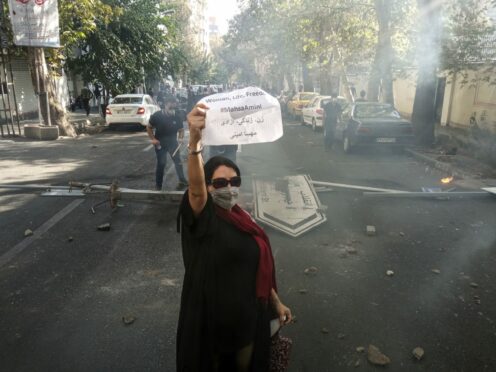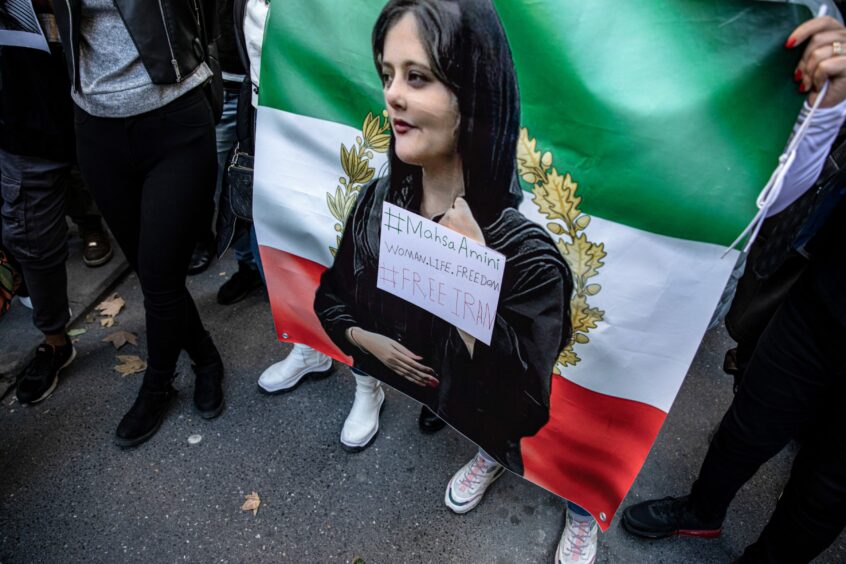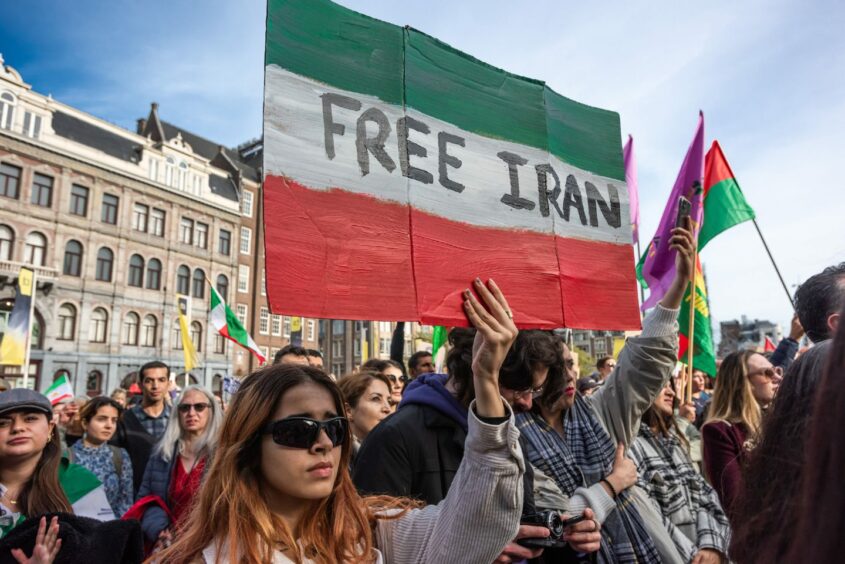
The whole world now knows how it started.
Mahsa Amini was 22 when she went to Tehran with her family on a visit and stopped in the street by the country’s so-called “morality police” for the crime of not wearing her headscarf properly.
Despite pleading with them that she was from out of town, where rules were perhaps enforced differently, the police wrestled her brother away, bundled her into a police van and drove off. Despite her brother following behind the van in a car, the family never saw her again until she was lying in a coma in a hospital bed.
After she died, the authorities tried to tell the family Mahsa had an underlying health condition, and died of a heart attack. Witnesses in the detention centre reported that instead, Mahsa had been beaten.
A leaked medical report showed she suffered massive internal bleeding, and list her cause of death as a “cranial injury”. It’s to her family’s credit that they refused to be intimidated into silence, and blamed the morality police directly for their daughter’s death.
Mahsa’s death has set off a wave of protest that has yet to abate. This particular round of protest, however, is being driven by women, and increasingly the youth. Women I spoke to said they felt Mahsa’s death viscerally, because for women in Tehran “it could have been any of us”. Friends spoke of how the constant fear of what does and doesn’t constitute “good hijab” results in an ongoing, low-level stress. What one “morality policeman” deems as sound, another will take exception to. It’s completely subjective, and emotionally draining. Women also point out that lower and middle-class women are policed differently to wealthier women and the elite.
Here in Scotland, we’re used to being able to sound off when something winds us up. But protesting in Iran is very different. For starters, the body count as a result of protesting in Iran is much higher. And yet, four weeks on, those protests are continuing and are being driven by the young.
Protesters speak out in Iran after Amini’s death: We are terrified but we will resist
These are no school strikes for climate. Schoolgirls are showing their contempt for the country’s supreme leader in assemblies, tearing his pictures from the walls and stamping on them.
In return, they are dragged off, beaten with batons, and many of them will never return to their families.
Make no mistake, these are children. Teenagers, who have active social media lives, like kids here. Kids, who spend their free time making TikToks of daft dances, who sing their hearts out in online videos, who are superfans of K-Pop sensations BTS. Girls who used to share makeup tips with friends online, are now making TikToks of themselves cutting off their hair, because if the morality police find hair so offensive, they don’t want it anymore. This is the kind of teenage rebellion I’m not sure I’d have had the courage to do when I was their age. The penalty for defying the authorities in Iran is severe.
Men, women and children are beaten, tortured and even killed for saying “enough is enough”. And yet when asked why they continue, they say “every time they kill one of us, more of us rise up”. At the end of the day, they want to be kids, like kids anywhere else in the world.
They want to be free to wear the hijab if they want, or not wear it if they don’t want. They don’t want to have their dress sense policed. Like women the world over, they want the choice and the freedom to live their lives. This is something as a woman in Scotland, even I can relate to. Except, when someone takes exception to my clothing choices, or hairstyle, I don’t face detention, humiliation or beating. The courage Iran’s women is showing right now is astonishing.
We owe it to every one to stand with them.
Halla Mohieddeen is a journalist and broadcaster

Enjoy the convenience of having The Sunday Post delivered as a digital ePaper straight to your smartphone, tablet or computer.
Subscribe for only £5.49 a month and enjoy all the benefits of the printed paper as a digital replica.
Subscribe
